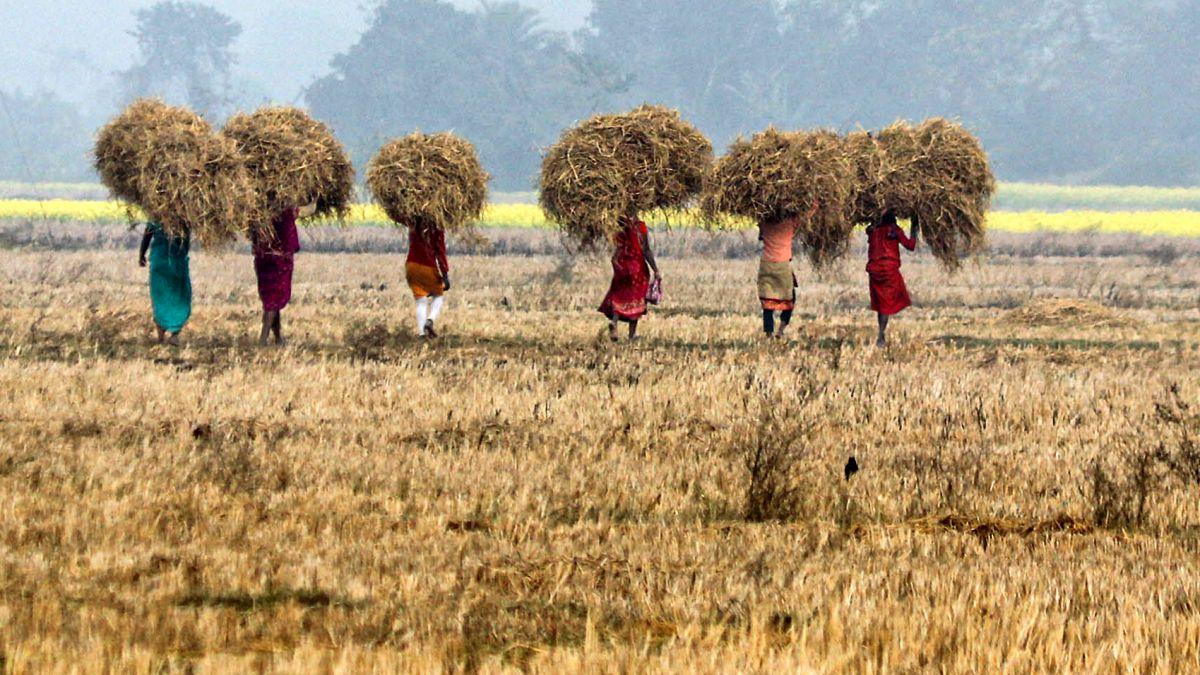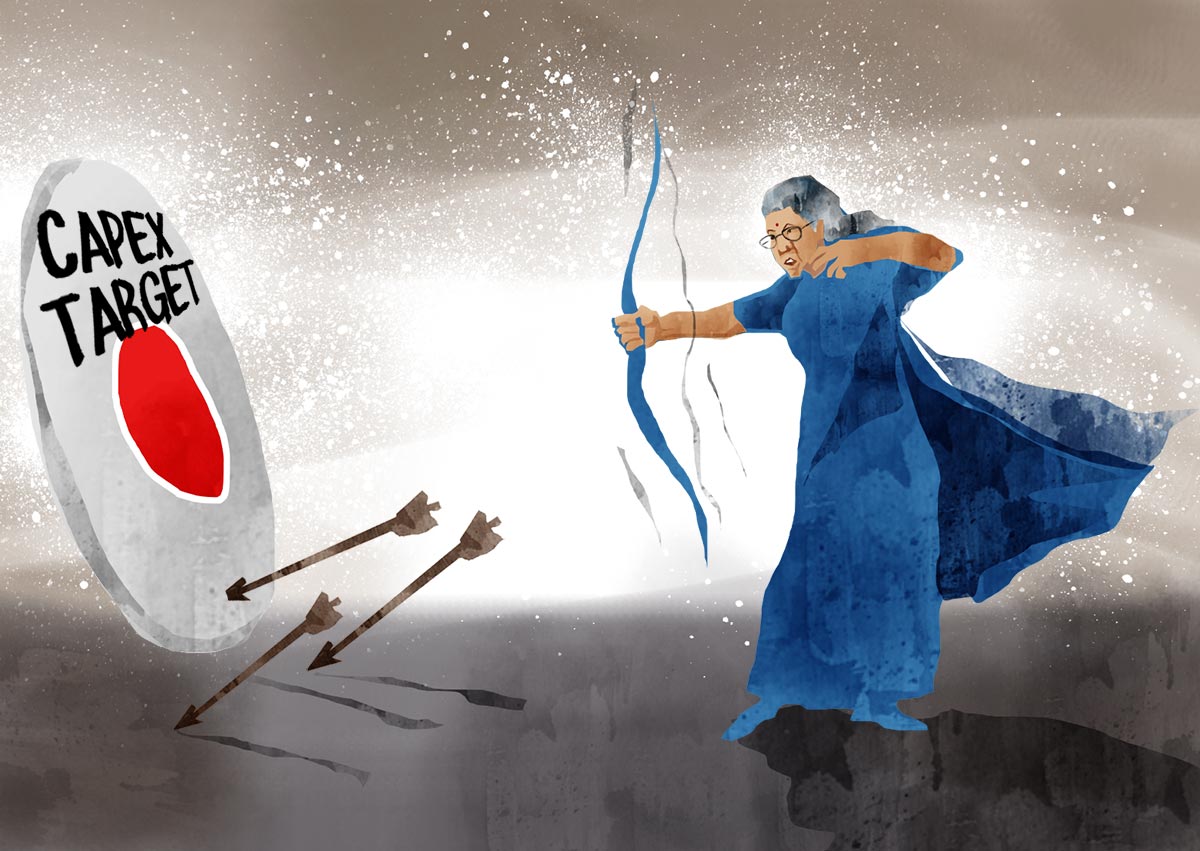In a significant policy shift aimed at boosting agri-productivity and rural prosperity, Finance Minister Nirmala Sitharaman on Saturday announced six new agricultural schemes while increasing the subsidised Kisan Credit Card loan limit to Rs 5 lakh from the existing Rs 3 lakh, benefiting 7.7 crore farmers, fishermen, and dairy farmers.

Photograph: ANI Photo
The announcements came even as the government proposed a 2.75 per cent lower Budget allocation for the agriculture ministry at Rs 1.37 lakh crore for the next fiscal.
However, this reduction was offset by enhanced allocations for allied sectors, with fisheries, animal husbandry and dairying seeing a 37 per cent increase to Rs 7,544 crore, and food processing receiving a 56 per cent boost to Rs 4,364 crore.
The total Budget allocation for agriculture, allied sectors, and food processing is pegged at Rs 1.45 lakh crore for 2025-26, expected to surpass the current year’s revised estimate of Rs 1.47 lakh crore once allocations for new schemes are detailed.
Presenting her eighth budget speech, Sitharaman positioned agriculture as ‘the first engine of growth’ and introduced Pradhan Mantri Dhan-Dhaanya Krishi Yojana targeting 100 low-productivity agri-districts.
The scheme, implemented with state governments, aims to benefit 1.7 crore farmers through enhanced productivity, crop diversification, and improved post-harvest infrastructure.
In a major push for self-reliance, a six-year pulses mission received Rs 1,000 crore to boost tur, urad, and masoor production. Under this initiative, Nafed and NCCF will procure pulses for four years from registered farmers through formal agreements.
The Budget allocated Rs 500 crore each for a comprehensive horticulture programme on vegetables/fruits and a five-year cotton mission promoting extra-long staple varieties.
A dedicated Makhana Board for Bihar with Rs 100 crore outlay and a research ecosystem mission focusing on climate-resilient seeds received equal allocations.
Recognising India’s position as the second-largest global producer in fish and aquaculture, with seafood exports worth Rs 60,000 crore, the government announced a sustainable fishing framework for the Indian Exclusive Economic Zone, particularly focusing on the Andaman & Nicobar and Lakshadweep Islands.
To enhance India’s competitiveness in the global seafood market, the government proposed cut in basic custom duty (BCD) from 30 per cent to 5 per cent on Frozen Fish Paste (Surimi) for manufacture and export of its analogue products. It also proposed cut in BCD from 15 per cent to 5 per cent on fish hydrolysate for manufacture of fish and shrimp feeds.
The cooperation ministry saw a 58.21 per cent increase to Rs 1,186.29 crore.
Key schemes received significant boosts: Rashtriya Krishi Vikas Yojana (41.66 per cent to Rs 8,500 crore), National Mission for Natural Farming (six-fold to Rs 616.01 crore), Krishionnati Yojana (12.58 per cent to Rs 8,000 crore), and Namo Drone Didi (two-fold to Rs 676.85 crore) for FY26.
The Pradhan Mantri Matsya Sampada Yojana allocation increased by 64.33 per cent to Rs 2,465 crore, while animal husbandry and dairying programs saw a two-fold increase to Rs 1,050 crore.
The PM-FME scheme for micro food processing enterprises received a 67 per cent higher allocation at Rs 2,000 crore.
Agriculture Minister Shivraj Singh Chouhan lauded the budget as ‘visionary’, stating it had ‘the fragrance of faith, the yearning for development and the yearning to build a developed India’.
He emphasised that agriculture and farmers’ welfare received top priority in the government’s vision for a self-reliant India.
The government also announced plans for a new urea plant in Namrup, Assam, with an annual capacity of 12.7 lakh tonnes, and enhanced support to the National Cooperative Development Corporation (NCDC) for cooperative sector lending operations.




